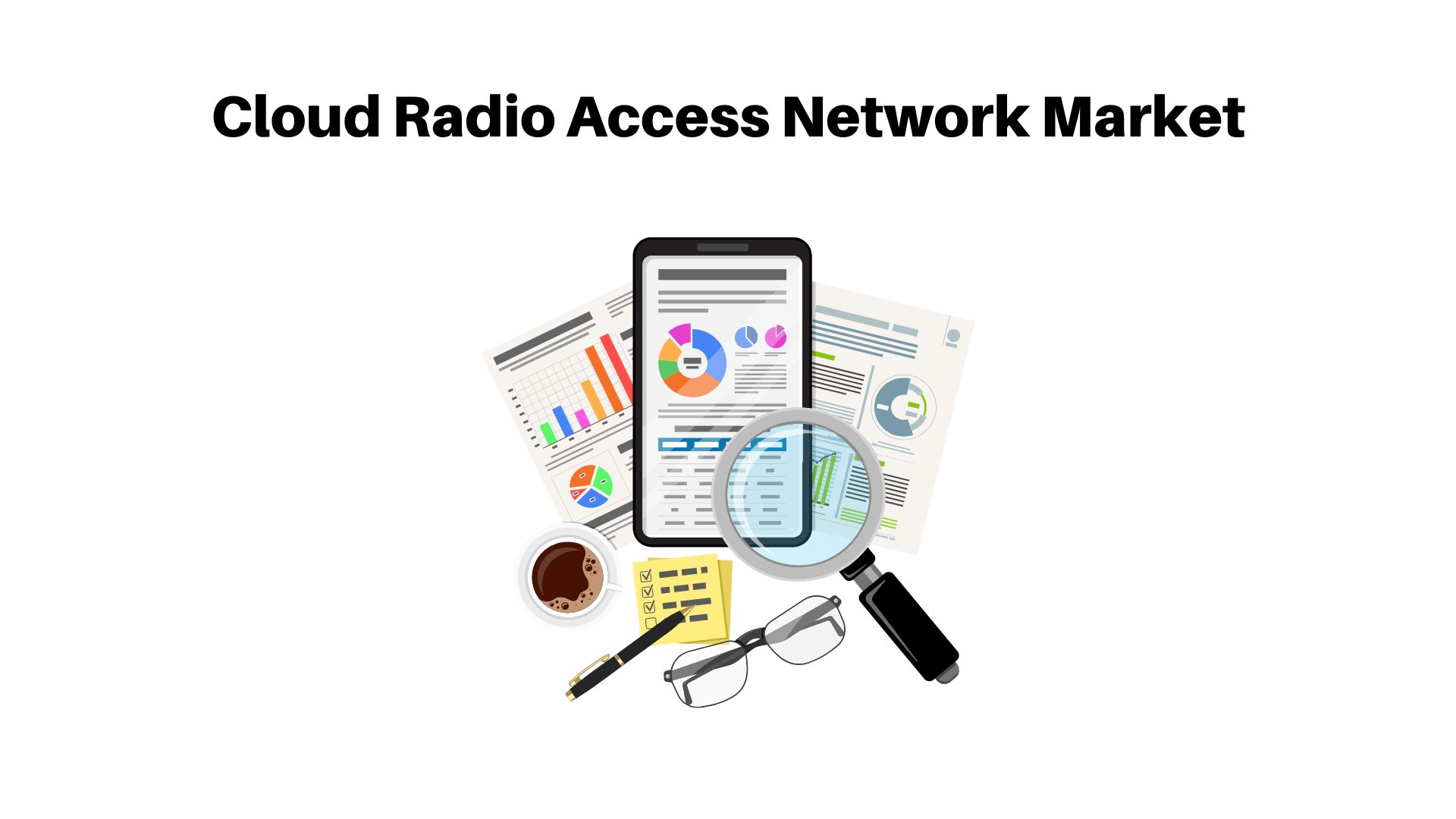Cloud Radio Access Network (C-RAN) Market size in terms of volume and value To reach USD 4260.84 Mn by 2033

Page Contents
Market Overview
Published Via 11Press: Cloud Radio Access Network (C-RAN) is a cutting-edge architecture for wireless communication networks that has gained significant interest lately. Traditional wireless network designs require each base station to have its own set of radio resources and processing capabilities. C-RAN multiple stations are connected to a centralized data center where baseband processing functions are virtualized and hosted in the cloud. Cloud Radio Access Network (C-RAN) Market provides several advantages over traditional wireless network architectures. Primarily, it facilitates resource sharing between base stations which can lead to more efficient use of radio spectrum and lower operational expenses.
The Cloud Radio Access Network (C-RAN) Market size is expected to reach USD 4260.84 Mn by 2033, up from its current value of USD 1366.72 Mn in 2022, growing at an annual compound growth rate (CAGR) of 10.89% from 2023-2033.
The centralized architecture also permits more flexible resource allocation based on network demand, which can improve network performance and user experience. C-RAN is expected to play an increasingly significant role in the evolution of wireless communication networks, particularly as 5G takes off and beyond. By virtualizing baseband processing functions in the cloud, it opens up possibilities for new services and applications development. Despite these obstacles, C-RAN is expected to remain relevant throughout this decade and beyond.
Key Takeaways
- The Cloud Radio Access Network (C-RAN) Market expected to reach USD 1366.72 Mn in 2022.
- Forecasted compound annual growth rates between 2023 and 2033 is 10.89%.
- By 2033, the Cloud Radio Access Network (C-RAN) Market is projected to reach USD 4260.84 Mn.
- C-RAN is an innovative wireless network architecture that centralizes baseband processing functions in the cloud.
- Multiple base stations are connected to a central data center, where virtualized baseband processing functions are hosted.
- C-RAN facilitates resource sharing among base stations, leading to more efficient use of the radio spectrum and lower operational expenses.
- A centralized architecture offers more flexibility in allocating resources based on network demand, improving network performance and user experience.
- Virtualizing baseband processing functions in the cloud can make it easier to implement new services and applications.
- C-RAN presents unique challenges, such as the requirement for high bandwidth, low latency links and increased network complexity.
- C-RAN is set to have a major role in the advancement of wireless communication networks, particularly during 5G and beyond.

Click Here To Access Sample Pages Of This Report: https://marketresearch.biz/report/cloud-radio-access-network-c-ran-market/request-sample/
Regional Snapshot
- North America is a leading market for C-RAN, with major telecommunications companies investing heavily in the technology. The region is expected to remain at the top of this sector due to the high adoption of 5G networks.
- Europe is another significant market for C-RAN, with major telecom operators like Vodafone and Orange adopting it into their networks. The region is expected to experience rapid growth over the coming years due to an increasing demand for high-speed data services.
- Asia-Pacific is expected to be the fastest-growing market for C-RAN, due to the widespread adoption of 5G technology in countries like China, Japan and South Korea. Furthermore, this region boasts several leading players within the C-RAN space such as Huawei, ZTE and Samsung.
- Latin America is rapidly becoming a hub for C-RAN adoption, with several telecommunications companies there starting to introduce the technology in their networks. As 5G adoption increases across Latin America, analysts anticipate significant growth over the coming years in this region.
- C-RAN is experiencing a boom in the Middle East and Africa, as several telecom operators in these regions invest in the technology. Forecasts predict significant growth over the coming years due to an increasing need for high-speed data services as well as 5G adoption.
Drivers
- 5G Technology: The increasing need for fast data services, low latency, and ample network capacity has driven the adoption of 5G technology. C-RAN, in particular, is an integral component of 5G networks as it offers flexibility and scalability to support these advanced services.
- Cost Savings: C-RAN can assist operators in cutting their capital and operational expenses by centralizing baseband processing functions into the cloud. This results in more efficient use of network resources, lower energy consumption, and lower maintenance expenses.
- Spectrum Efficiency: C-RAN can enable resource sharing among base stations, leading to more efficient use of the radio spectrum. This helps operators meet growing demands for wireless services while decreasing their spectrum costs.
- Network Flexibility: C-RAN offers operators greater freedom in allocating network resources according to demand. Its centralized architecture enables real-time optimization of the network and faster launch times for new services and applications.
- Service Innovation: C-RAN can simplify the deployment of new services and applications by offering a more adaptable and scalable network architecture. This enables operators to offer cutting-edge offerings to their customers, creating new revenue streams in the process.
- Green Technology: C-RAN can help to reduce the carbon footprint of wireless networks by centralizing baseband processing functions in the cloud. This could result in lower energy consumption and a lessened environmental impact.
Inquire Here & Query for report: https://marketresearch.biz/report/cloud-radio-access-network-c-ran-market/#inquiry
Restraints
- C-RAN requires high-bandwidth links between base stations and a central data center, which can present an obstacle for operators with limited fiber connectivity. C-RAN also introduces additional latency due to transmitting data back and forth between them, impacting real-time applications and services. Furthermore, C-RAN introduces greater network complexity compared to traditional wireless network architectures; this necessitates sophisticated management and orchestration techniques in order to guarantee its stability and scalability.
C-RAN systems rely heavily on virtualized baseband processing functions that may only be provided by a few vendors. - This can create vendor lock-in and restrict operators' ability to switch vendors or customize their network accordingly. C-RAN poses additional security risks due to its centralization of network functions in the cloud. Operators must take steps to guarantee their networks remain secure and protected against cyber threats. C-RAN can offer cost savings in the long run, but requires significant upfront investments for infrastructure and equipment. This may pose a substantial barrier to entry for smaller operators or those with limited resources. Furthermore, C-RAN may be subject to regulatory issues like spectrum licensing or compliance with local regulations; operators must ensure they abide by all relevant rules to avoid legal or financial repercussions.
Opportunities
- C-RAN offers operators in emerging markets that are transitioning to 5G networks a unique opportunity. Not only can these markets take advantage of cost savings and network flexibility provided by C-RAN, but they will also be able to meet the increasing demand for wireless services as a result. C-RAN is closely connected to the growing trend of network virtualization, which involves moving network functions to the cloud. This presents operators with an opportunity to take advantage of virtualized network functions for more flexible and scalable services. C-RAN provides operators with the freedom to offer new and creative services to their customers, creating new revenue streams. For instance, operators can take advantage of C-RAN's flexibility by offering network slicing – the ability to allocate network resources specifically for certain applications or services.
- C-RAN can open up new business opportunities by connecting operators and cloud service providers. Cloud providers can supply the cloud infrastructure necessary for C-RAN, while operators provide their wireless access network. Open RAN is an emerging standard for wireless networks that involves disaggregating various elements of the network, such as the radio access network and baseband processing functions. C-RAN is an essential enabler of Open RAN, giving operators the chance to adopt this new standard and enjoy cost savings and network flexibility. C-RAN also enables the deployment of edge computing services – which involve processing data closer to users – which could result in lower latency times and improved network performance for a superior user experience.
Challenges
- C-RAN networks consist of a complex ecosystem of network functions and equipment that may be supplied by multiple vendors. This presents interoperability issues and integration challenges as the network matures over time, especially as it becomes more interconnected.
- C-RAN must be designed to support the growing demand for wireless services in the long term, which may necessitate advanced planning and architectural design to guarantee that the network can scale up in accordance with future needs.
- C-RAN must be designed to deliver uncompromising reliability and availability, especially for critical services and applications. This necessitates advanced network management and orchestration strategies in order to guarantee that the network remains operational at all times.
- C-RAN presents additional network management challenges compared to traditional wireless network architectures. Operators must ensure they possess the required skills and tools for successful management of their system.
- C-RAN requires substantial energy consumption, particularly in the centralized data center. This can be an expensive burden for operators in areas with high energy prices.
- C-RAN relies heavily on fiber connectivity to provide high-bandwidth links between base stations and the centralized data center. Unfortunately, this can be a significant challenge in areas with limited fiber coverage, such as rural or emerging markets.
- C-RAN must be designed to seamlessly integrate with existing legacy infrastructure, such as existing base stations and network equipment. This can present a significant challenge as the network grows older and new equipment is added.
- C-RAN systems rely heavily on virtualized baseband processing functions that may only be provided by a select few vendors. This could create vendor lock-in and restrict operators' options to switch vendors or customize their network accordingly.
Market Segmentation
Global Cloud Radio Access Network (C-RAN) Market, By Component
- Infrastructure
- Remote Radio Units
- Baseband Units
- Fronthaul
- Others
- Solution
- Services
- Network Services
- Custom Services
- System Integration Services
Global Cloud Radio Access Network (C-RAN) Market, By Application
- Large Public Venues
- Targeted Outdoor Urban Areas
- High-density Urban Areas
- Suburban and Rural Areas
Key Players
- Agilent Technologies, Inc.
- Ericsson AB
- Actix International Limited
- Telco Systems
- Hitachi Data Systems Ltd.
- Aricent Inc.
- Ceragon Networks Ltd.
- Intel Corporation
- Nokia Corporation
- Cisco Systems, Inc.
- ZTE Corporation and Huawei Technologies Co. Ltd
Report Scope
| Report Attribute | Details |
| Market size value in 2022 | USD 1366.72 Mn |
| Revenue forecast by 2033 | USD 4260.84 Mn |
| Growth Rate | CAGR Of 10.89% |
| Regions Covered | North America, Europe, Asia Pacific, Latin America, and Middle East & Africa, and Rest of the World |
| Historical Years | 2017-2022 |
| Base Year | 2022 |
| Estimated Year | 2023 |
| Short-Term Projection Year | 2028 |
| Long-Term Projected Year | 2033 |
Growing Demand => Request for Customization
Recent Developments
- Open RAN is an emerging standard for wireless networks that involves disaggregating various elements of the network, such as the radio access network and baseband processing functions. C-RAN is an essential enabler of Open RAN, and many operators are now exploring its use to increase network flexibility and cut costs. Network slicing is a technique which allows operators to allocate network resources specifically to applications or services. C-RAN allows operators to offer network slicing, giving them the freedom to offer new and innovative services to their customers. Cloud-native C-RAN uses cloud-native technologies like Kubernetes and microservices for building and running C-RAN networks. This gives operators the capacity to rapidly deploy and scale their networks while improving reliability and reducing costs.
- The O-RAN Alliance is a global industry consortium developing open standards for radio access networks. C-RAN an essential element of this architecture, has become increasingly important as more operators join forces with them in developing open and interoperable networks. C-RAN can enable edge computing services – which involve processing data closer to end-users – which could result in lower latency times and improved network performance overall, leading to enhanced user experiences. As a result, many operators are exploring how they can utilize edge computing alongside C-RAN to offer new and innovative services to their customers.
Key Questions
1. What is Cloud Radio Access Network (C-RAN)?
C-RAN is a network architecture that separates baseband processing functions from remote radio heads (RRHs), centralizing them in a data center. This enables operators to reduce costs, boost flexibility in their networks, and enhance performance overall.
2. What are the Benefits of C-RAN?
C-RAN offers several advantages, such as reduced costs, greater network adaptability, improved performance and easier management and orchestration of networks.
3. What are the challenges associated with C-RAN?
C-RAN faces several difficulties, including interoperability, scalability, reliability, management complexity, energy consumption, fiber connectivity to legacy infrastructure and vendor lock-in.
4. What are some recent advancements in C-RAN technology?
Recent advancements include Open RAN, network slicing, cloud native C-RAN, the O-RAN Alliance, and using C-RAN to enable edge computing services.
5. How does C-RAN differ from traditional wireless network architectures?
C-RAN stands out by centralizing baseband processing functions in a data center, rather than having them distributed throughout the network. This provides operators with increased flexibility, improved network performance and lower costs.
Contact us
Contact Person: Mr. Lawrence John
Marketresearch.Biz (Powered By Prudour Pvt. Ltd.)
Tel: +1 (347) 796-4335
Send Email: [email protected]
The team behind market.us, marketresearch.biz, market.biz and more. Our purpose is to keep our customers ahead of the game with regard to the markets. They may fluctuate up or down, but we will help you to stay ahead of the curve in these market fluctuations. Our consistent growth and ability to deliver in-depth analyses and market insight has engaged genuine market players. They have faith in us to offer the data and information they require to make balanced and decisive marketing decisions.



